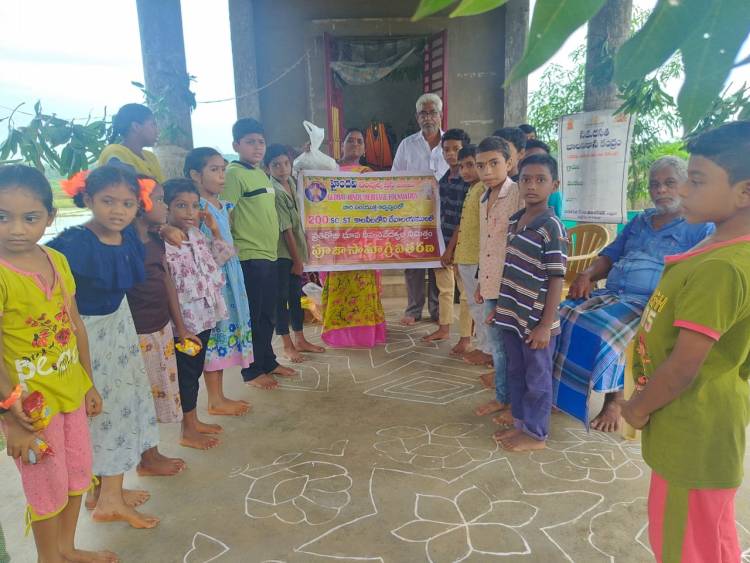[GHHF] 200 SC and ST Colonies Temples received pooja materials for Dhupa Deepa Naivedya to light up the Temples
 Global Hindu Heritage Foundation is extremely happy to recognize the need to preserve and protect the traditions and customs in the villages. We feel that many villagers identify themselves their Gramadevatas and pray for their blessings to protect them from possible impeding dangers. This is our effort to revive the sentiments and faith in Gramadevatas who once played a significant role in unifying the entire community.
Global Hindu Heritage Foundation is extremely happy to recognize the need to preserve and protect the traditions and customs in the villages. We feel that many villagers identify themselves their Gramadevatas and pray for their blessings to protect them from possible impeding dangers. This is our effort to revive the sentiments and faith in Gramadevatas who once played a significant role in unifying the entire community.
During the celebrations of Ganesh Chaturthi festival GHHF distributed Dhupa Deepa Naivedyam Pooja kits to selected villages in Dalit communities.
In the villages of 22 mandals like Narasapuram, Marteru, Attili, Elur, Nallajarla, Ungutur, Tanuku, Peravalli etc. in Old West Godavari district, the Global Hindu Heritage Foundation and Hyndavi Temples Trust jointly managed the distribution of pooja materials for regular incense offering services in 200 temples of SC and ST colonies.
In Hindu temples, if the lamp is always lit, that light becomes a beacon of knowledge and protects those around it from going into the darkness of ignorance. These pooja funds are given on behalf of the organization to provide a helping hand to those who have unwavering devotion to the Lord and are facing financial difficulties to serve him, and for the smooth running of the services in the temples.
Grama Devatas means village Goddesses/Deities who were installed in the villages to protect the village, to protect the crops, to prevent calamities, to prevent various kinds of ailments and to bless the villagers with health and wealth. As we know, many Grama Devatas are located in a small place in the community or village. The overwhelming majority of Grama Devatas are Goddesses with very few notable experiences. Dharma-Thakkur is a god of fertility and disease in West Bengal. Another example is Kala Bhairava, a fierce form of Lord Shiva is the Gramadevata in the rural villages of Maharashtra, where he is referred to as Vairavar.
According to Sree Padma (2013), “A Gramadevata often is “at home” in the outdoors and usually symbolized aniconically in the form of a shapeless rock, a snake hole, or a tree. While she may also be seen in the form of images within more humbly constructed and appointed shrines at the edge of a village, Gramadevatas are usually worshipped directly by devotees without any Brahman priestly mediation and therefore without elaborate Sanskrit recitations….The priests and priestesses of these Gramadevata are mostly from non-Brahminic castes and play a major cultic role only at the time of special festivals.”
Your donations are appreciated;
By Zelle: ghhfusaorg@gmail.com
PayPal: savetemples.org
By Check: Or you can send a check payable to GHHF, 14726 Harmony Lane, Frisco, TX 75035.
It is tax-deductible.
By Rupees: call 601-918-7111; +91 83096 43979































 Urgent support needed for Bangladesh Hindus
Urgent support needed for Bangladesh Hindus 







